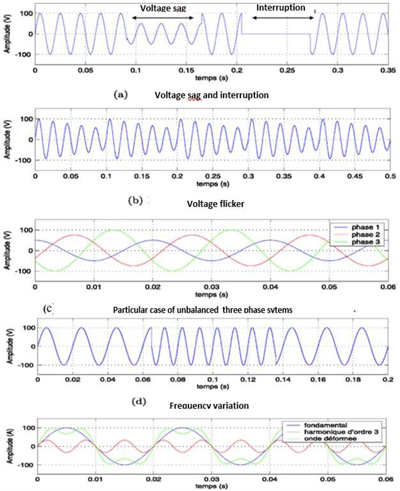Electrical Disturbances
Electrical Disturbances
Attacks on Electrical Disturbances
an attacker could launch an availability attack by interrupting or interfering with the electrical service available to a system.
- Example,
- if attacker gained physical access to a data center’s electrical system, he might be able to cause a variety of electrical disturbances, such as the following:
Power spikes 长钉: Excess 过度 power for a brief period of timeElectrical surges: Excess power for an extended period of timePower fault: A brief electrical outageBlackout: An extended electrical outagePower sag 下陷: A brief reduction in powerBrownout: An extended reduction in power
To combat such electrical threats:
install
uninterruptable power supplies (UPS)andgenerator backupsfor strategic devices in your network.- routinely test the UPS and generator backups.
- A
standby power supply (SPS)is a lower-end version of a UPS. - Although it’s less expensive than a traditional UPS, an SPS’ battery is not in-line with the electricity coming from a wall outlet.
- Instead, an SPS’ battery operates in parallel with the wall power, standing by in the event that the wall power is lost.
- Because of this configuration, there is a brief period of time between a power outage and the SPS taking over, which could result in the attached equipment shutting down.
- A
Attacks on a System’s Physical Environment
- Attackers could also intentionally damage computing equipment by influencing the equipment’s physical environment. example, attackers could attempt to manipulate such environmental factors as the following:
Temperature: computing equipment generates heat (like in data centers or server farms), attacker can interferes with the operation of an air-conditioning system, the computing equipment couldoverheat.Humidity: computing equipment is intolerant of moisture, attacker cancause physical damageto computing equipment bycreating a high level of humidityin computing environment.Gas: Because gas can often be flammable 可燃的, attacker can injects gas into a computing environment, small sparks in that environment could cause a fire.
- Consider the following recommendations to mitigate 减轻 such environmental threats:
- Computing facilities should be
locked(and not accessible via a drop ceiling, a raised floor, or any other way other than a monitored point of access). - Access should require
access credentials(like via a card swipe or a bio- metric scan). - Access points should be visually
monitored(like via local security pesonnetnel or remotely via a camera system). Climate control systemsshould maintain temperature and humidity, and send alerts if specified temperature or humidity thresholds are exceeded.- The
fire detection and suppression systemsshould be designed not to damage electronic equipment.
- Computing facilities should be
SELECT UPPER(S.scan_source) AS ScanSource, COUNT(DISTINCT(S.findings_id)) AS COUNT FROM linkkpi.findings_vulnerabilities as F, linkkpi.code_guard_scans AS S WHERE F.first_seen_time BETWEEN $__timeFrom() AND $__timeTo() AND S.findings_id = F._id AND F.service_name = “findings-prod” AND F.first_seen_time BETWEEN $__timeFrom() GROUP BY ScanSource, S.scan_source ORDER BY S.scan_source DESC;
SELECT UPPER(U.EmpType) AS Emp_Type, COUNT(distinct(F._id)) as COUNT FROM linkkpi.findings_vulnerabilities AS F, linkkpi.devx_users AS U WHERE U.dsid = F.person_id AND F.person_id != -1 AND F.service_name = “findings-prod” AND F.product = “Code Guard” AND F.feature IN (“OSS_GUARD”) AND F.first_seen_time BETWEEN $__timeFrom() AND $__timeTo() GROUP BY U.EmpType ORDER BY U.EmpType DESC;
SELECT “TOTAL” AS Emp_Type, COUNT(distinct(F._id)) AS COUNT FROM linkkpi.findings_vulnerabilities AS F, linkkpi.devx_users AS U WHERE U.dsid = F.person_id AND F.person_id != -1 AND F.service_name = “findings-prod” AND F.product = “Code Guard” AND F.feature IN (“OSS_GUARD”) AND F.first_seen_time BETWEEN $__timeFrom() AND $__timeTo();

Comments powered by Disqus.